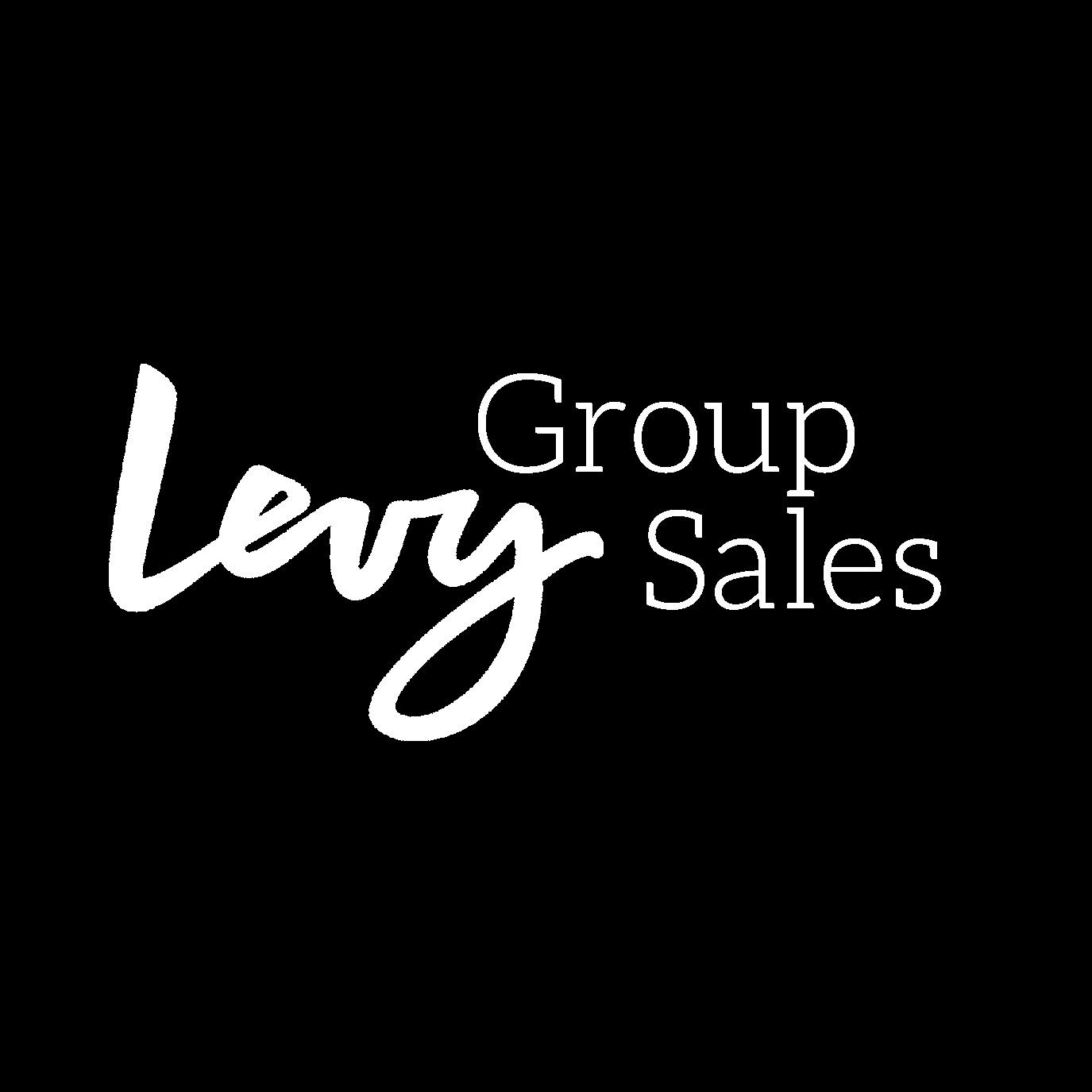

GROUP SALES GROUP SALES
Hello, You came to the right place.
Foundational Standards are both a mindset and executional commitment. It is ensuring everything our guests (internal & external) and partners (current & potential) see, say, taste, touch, smell, and hear makes you and the Company proud.
Understanding that Group Sales plays a critical role in the guest experience, we have included some tools to help ensure everything our guests are presented is at least representative of our minimum foundational standards.
• Introduction / Overview
• Food and Alcohol Sampling
• Consumption Sheets: Tracking and Submission
• Exhibitor Catering
• Food Allergen Awareness
• Food Donation Guidelines
• Sales History Database
• Catering Menu Presentation
• Tasting Guidelines
• Staff Office Guidelines
• Labels and Menu Tags
SAMPLING: & RISK MANAGEMENT
Welcome to our comprehensive guide on buyouts and sampling events! Understanding the ins and outs of food and alcohol sampling, buyout events, and the crucial insurance requirements is essential. Let's dive in!
Food and Alcohol Sampling
Food Sampling
When it comes to food sampling, using the designated Sampling Form is a must. This form ensures that all activities comply with state and local regulations. Remember, these guidelines are specifically for manufacturers and distributors as outlined by relevant laws.
Alcohol Sampling
Similar to food sampling, alcohol sampling requires adherence to state and local regulations. The Sampling Form comes into play here as well to ensure compliance. Make sure to check and follow the executed sampling guidelines.
Special Event Considerations
Show-Driven Food Vendors
If you're dealing with show-driven food vendors, refer to the Sponsorship + Marketing Guidelines for detailed instructions. These guidelines will help you navigate the specific requirements and ensure a smooth event.
Food and Beverage Buyout Style Events
Events like Beerfest, held at many of our Midwest locations, fall under this category. Such events require indemnification and a separate agreement, coordinated directly with our legal team. These are distinct from the general sampling events and need special attention.
Role of Risk Management
Our Risk Management team, led by Ed Gilaty, may waive specific coverage amounts or types on a case-by-case basis. However, each vendor is reviewed individually, so an exception for one does not guarantee the same for another. For more detailed guidelines, visit our Certificate of Insurance Guidelines. Stay compliant and ensure a successful event by following these guidelines carefully.
Certificate of Insurance (COI) Guidelines
To protect our company and ensure smooth operations, all vendors, including outside caterers, decorators, florists, and bands, must have compliant insurance coverage. This coverage is evidenced by a Certificate of Insurance (COI). Here are the key points to keep in mind:
Reviewing COIs
Compliant Coverage: Ensure each vendor's COI is compliant with all necessary coverages, including liquor liability if applicable.
Up-to-Date COIs: Always verify that COIs are current. You may need to request updated COIs during the season or year.
Certificate of Insurance Guide: Use our guide to review the COIs of subcontractors thoroughly.
Standards
Group Sales
SAMPLING: & RISK MANAGEMENT
Key Insurance Requirements
General Liability: The general aggregate and excess liability combined must total $5,000,000. This coverage should be primary and non-contributory, with subrogation waived against all Additional Insured entities.
Auto Liability: $1,000,000 combined single limit, with primary and non-contributory coverage, and subrogation waived.
Liquor Liability: For vendors serving alcohol, $1,000,000 per occurrence and $5,000,000 aggregate, with the required coverage terms.
Workers Compensation and Employer’s Liability: $500,000 for each category, with subrogation waived
Additional Information
Policy Dates: Ensure that the policies are always valid during the vendor's agreement term. Follow up for updated COIs as needed.
Additional Insureds: List all legal business names on the COI in the description of operations box. This list can be found on Levy Source.
Certificate Holder: The certificate holder should be listed as Levy at [LOCATION NAME] and the respective address.
Potential for Exceptions
In certain cases, specific amounts or types of coverage may be waived by Risk Management. However, these exceptions are made on a case-by-case basis and should not be assumed for all vendors. Always confirm any waivers with Risk Management before proceeding.
By following these guidelines and diligently reviewing COIs, you can ensure your vendors have the necessary insurance coverage, thereby protecting your business and clients. Remember, a compliant COI is not just a formality—it's a vital component of your risk management strategy.
Resources
Core Sampling Form & Sample COI
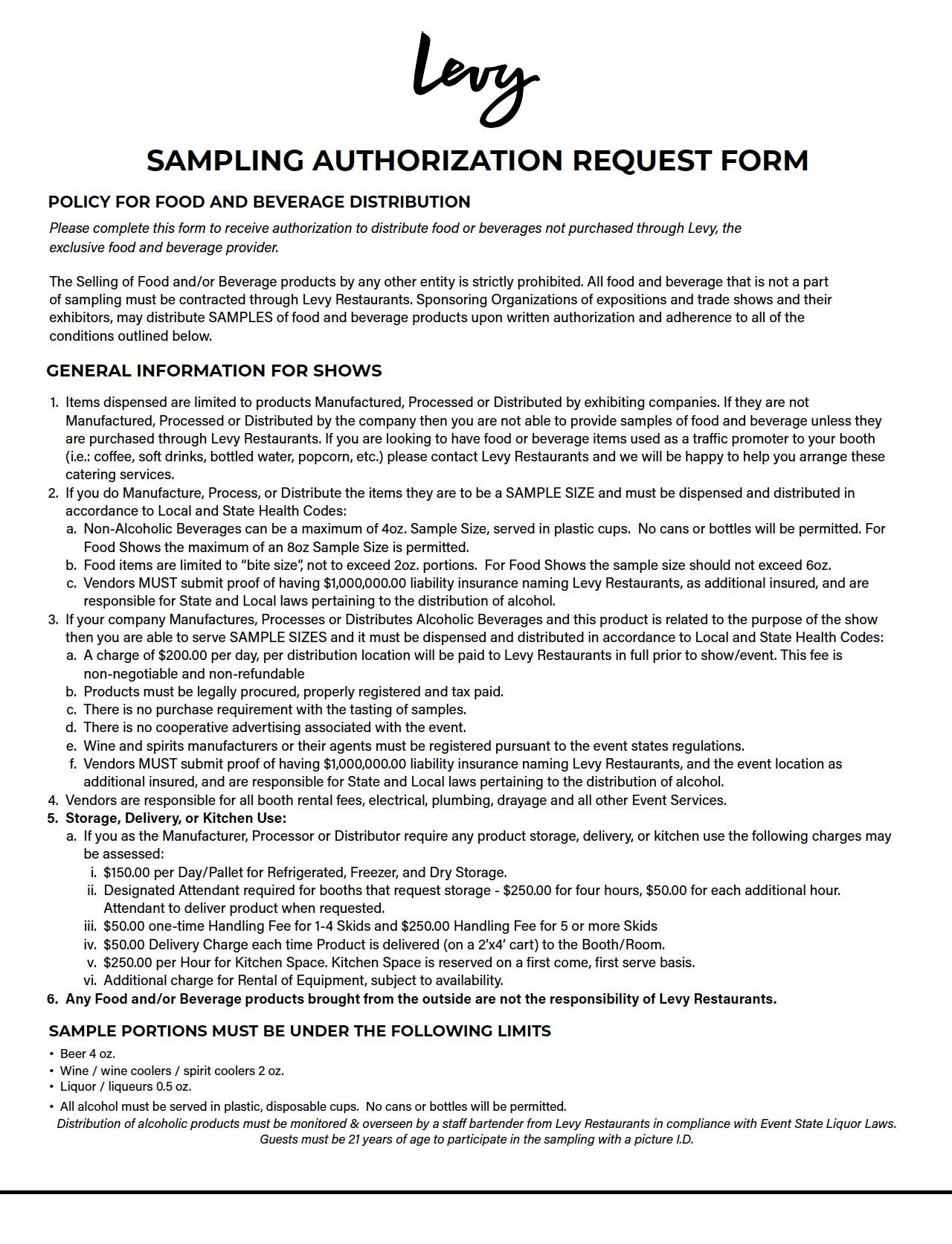
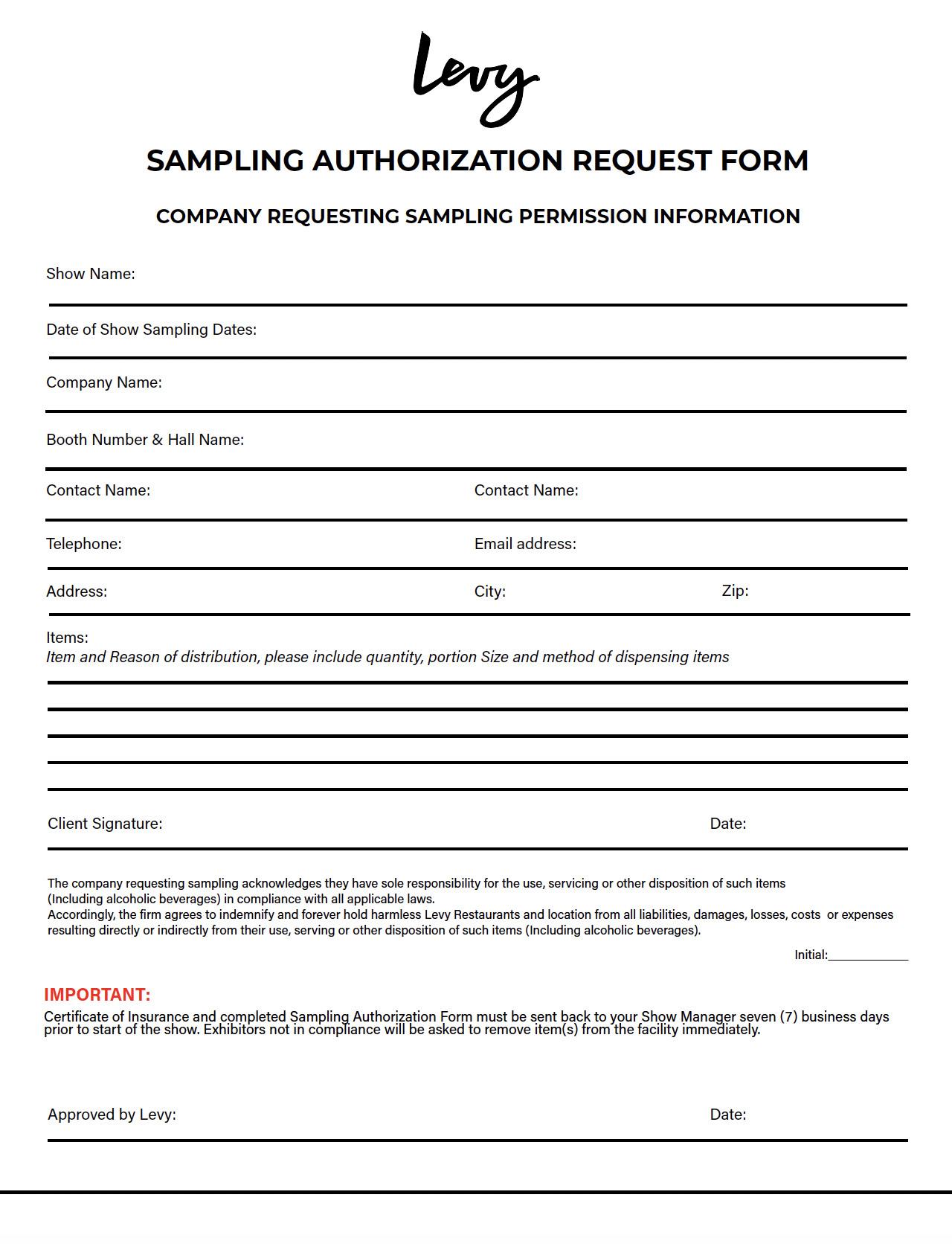
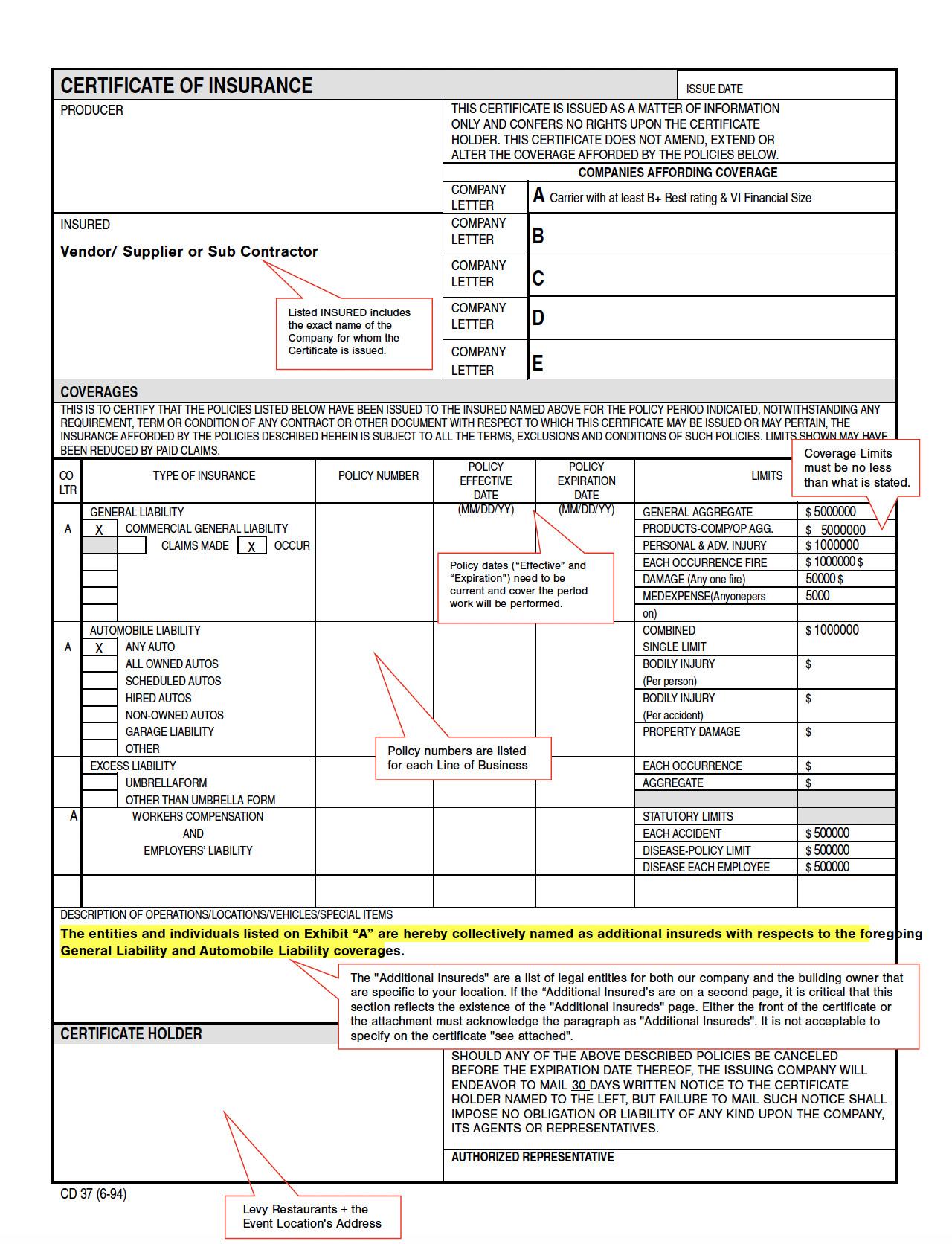
CONSUMPTION SHEETS BEST PRACTICES
When it comes to managing events successfully, keeping a close eye on consumptions is crucial. This is where Consumption Sheets come into play. They are essential tools that help in tracking the usage and consumption during events. Here's everything you need to know about how these sheets work, who is responsible for them, and how they are processed post-event.
What Are Consumption Sheets?
Consumption Sheets are detailed records that the Operations Team fills out with final counts and totals immediately following the end of an event or day. These sheets capture all the consumption data, which could include food, beverages, and other consumable items used during the event.
The Process
1. Filling Out the Sheets:
The Operations Team is responsible for filling out the Consumption Sheets right after the event ends. If for any reason the consumption data is going to be late, the Operations Team must inform Sales and Accounting before leaving for the night.
2. Submission:
All completed Consumption Sheets are to be placed in the Sales Office They must also be scanned and sent to the Sales Department before the end of the day.
3. Review and Updates:
Sales Managers update the Event Checks by 10 AM the following business day (or Monday if it’s a weekend).
They then close out the consumptions for their respective events.
Sales Managers’ Responsibilities
Event Check Updates: Sales Managers are tasked with updating Event Checks, which include detailed information about the event, including the consumptions. This must be done by 10 AM the next business day.
Closing Out Consumptions: Each Sales Manager is responsible for closing out the consumptions for their respective events, ensuring that all data is accurate and up-to-date
Optional Review: Depending on the event, the Sales Manager may send a copy of the Consumption Sheet, along with the updated Event Check, to the Show Manager for review.
By following these guidelines, event teams can ensure a seamless and accurate process for tracking and managing event consumptions. This not only helps in maintaining transparency but also aids in better planning and budgeting for future events.
Editable Template Link
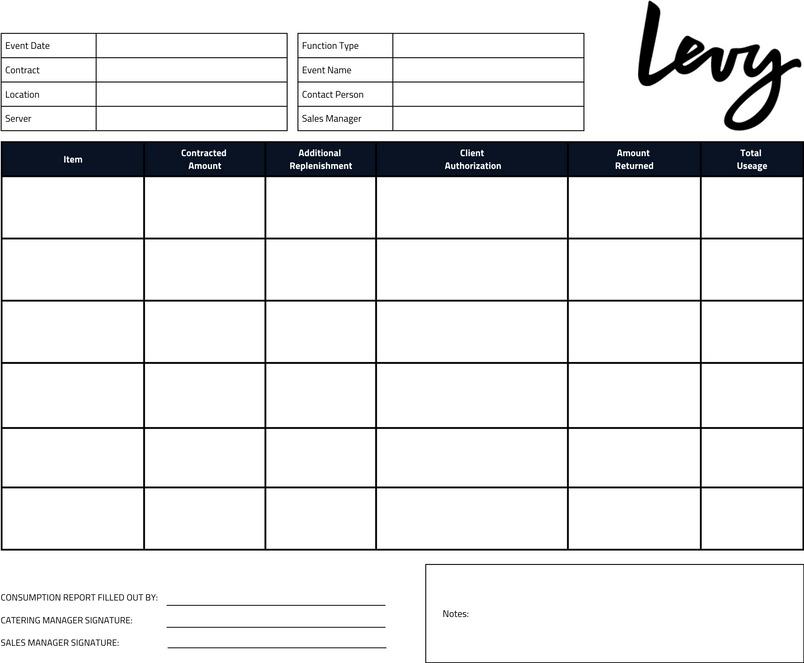





EXHIBITOR CATERING
BEST PRACTICES
Introduction
Exhibitor catering is an art form that can significantly enhance the experience of any exhibition event. From setting client expectations to offering various types of catering services, the goal is to make each event extraordinary. This post will highlight the importance of setting client expectations, best practices in sales and catering, the different types of catering services available, and the potential for making events extraordinary with mobile espresso bars.
Setting Client Expectations
One of the keys to successful exhibitor catering is setting clear expectations with your clients. This starts with a detailed timeline that show management can share with their exhibitors. The timeline should include all important dates and deadlines, such as order cut-off dates and last-minute menu options.
Best Practices
1. Clear Communication: Use a shared email address for all catering orders to ensure timely responses. The sales manager responsible should always BCC the shared email to keep everyone in the loop.
2. Organized Tracking: Utilize systems like Infor/RESERVE or shared spreadsheets to track exhibitor orders and inventory. This prevents overselling limited items like kegerators or espresso services.
3. Transparency in Fees: Make sure to share all potential fees upfront to avoid surprises and manage expectations effectively.
4. Site-Specific Rules: Ensure all health department rules, union regulations, and other site-specific restrictions are communicated clearly to the exhibitors.
Types of Catering Services
Exhibitor catering can be categorized into three main types: LevyGo: Simple drop-off catering with no return service. All items are delivered in disposable packaging.
Simple Exhibitor Catering: More comprehensive than LevyGo, this option may include hot or cold food and requires an attendant.
Full-Service Catering: Custom menus crafted by dedicated culinary teams, offering a premium experience with full management support.
Day of Event Menu
For late orders, offer a limited menu that is easy to execute but comes with increased pricing. This ensures that even last-minute requests can be accommodated without compromising quality. Group Sales
EXHIBITOR CATERING BEST PRACTICES
Making Events Extraordinary with Mobile Espresso Bars
To truly make an event memorable, consider incorporating a mobile espresso bar. Picture your guests gathered around, enjoying expertly crafted espresso-based drinks while networking and socializing. This unique addition can elevate the atmosphere and leave a lasting impression.
Contact Information
ExpressKafeh – Mobile Espresso Caterers
Serge Butman, CEO/Founder
Toll-Free: 800-238-8498
Final Thoughts

Exhibitor catering, when executed correctly, can significantly enhance the overall experience of an event. By setting clear client expectations, following best practices, offering diverse catering options, and adding unique touches like mobile espresso bars, you can transform any exhibition into an
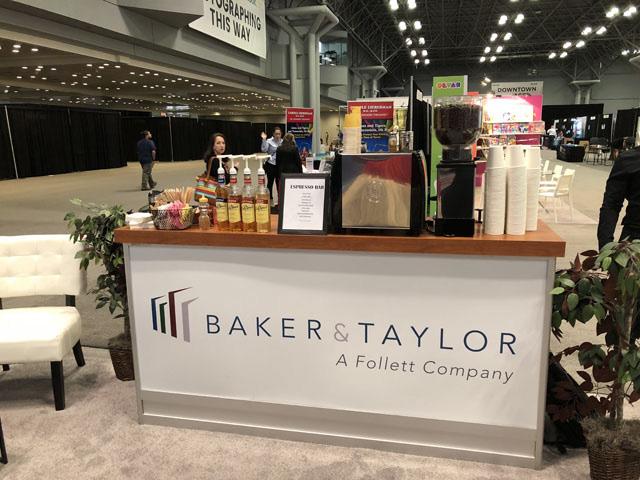
FOOD ALLERGEN AWARENESS
Ensuring the health and safety of our guests is paramount, especially when it comes to food allergens. Proper labeling and handling of allergens can significantly reduce health risks and enhance dining experiences. This guide delves into the major food allergens, best practices for naming dishes, and the importance of accurate labeling and communication.
Major Food Allergens
Understanding the common food allergens is crucial in preventing adverse reactions. The major food allergens include:
• Milk
• Eggs
• Fish (e.g., bass, flounder, cod)
• Crustacean shellfish (e.g., crab, lobster, shrimp)
• Tree nuts (e.g., almonds, walnuts, pecans)
• Peanuts
• Wheat
• Soybeans
• Sesame
Naming Foods with Allergen Concerns
Creating enticing food names while being mindful of allergens is a balancing act. When naming dishes, it’s important to call out specific allergens where appropriate. For example:
A dish named "Kale Avocado Cashew Salad" or "Banana Walnut Muffin" clearly identifies key ingredients and potential allergens.
Best Practices for Food Naming
• Highlight key ingredients: Mention prominent ingredients that could be allergens.
• Avoid overloading with allergens: Don’t list every allergen, as it can be unappealing and confusing.
• Use clear, legible fonts: Ensure all text is easy to read.
The Importance of Proper Labeling
Accurate labeling and careful handling of allergens are vital in food preparation. Here are some guidelines:
• Monitor ingredient sourcing: Ensure that you know the sources of your ingredients.
• Train staff: Educate your team about cross-contact and allergen prevention.
• Communicate clearly: If in doubt, always ask the chef or a knowledgeable staff member.
FOOD ALLERGEN AWARENESS
Can We Guarantee Allergen-Free Food?
Due to the open nature of our kitchens, it’s impossible to guarantee that any food is completely free of allergens. We strive to minimize the risk by monitoring ingredients and training our staff, but cross-contact can still occur.
When in Doubt, Ask the Chef
If there’s ever uncertainty about an ingredient or allergen, it’s crucial to consult the chef. They can provide accurate information and prevent mislabeling. For example, if you’re unsure whether nuts are present in an item, it’s better not to label it as nut-free.
Disclaimer
Be aware that our facility handles various allergens, including egg, milk, shellfish, soy, peanut, and tree nut products. We aim to provide comprehensive ingredient information, but cross-contact may occur. Guests with specific concerns should speak with a manager for personalized assistance.
Resources
Dietary Icons Menu Tag Template

FOOD DONATION BEST PRACTICES
Hey foodies! Let's talk about something incredibly important: food donations and leftover food guidelines. You might be curious about how you can safely donate food without landing in hot water. Well, you're in luck! The Bill Emerson Good Samaritan Food Donation Act is here to save the day.
What's the Bill Emerson Good Samaritan Food Donation Act?
This Act is like a superhero for food donors. It provides federal protection from civil and criminal liability for those who donate food in good faith. Whether you're a person or part of an organization, as long as you donate apparently wholesome food or fit grocery products to a nonprofit, you're covered. This protection also extends to the nonprofit organizations that distribute the food to those in need.
Criteria for Protection
• Good Faith Donation: The food must be donated in good faith.
• Wholesome Food: The food should be apparently wholesome or fit for consumption.
• Nonprofit Distribution: The donation must be made to a nonprofit organization that will distribute the food to those in need. But remember, this protection does not cover acts of gross negligence or intentional misconduct. So, play it safe and be honest!
Suggested Food Donation Opportunities
Looking to make a difference? There are numerous organizations always in need of food donations. One cool way to get involved is through the CAREIT app. This app makes it super convenient to connect with local nonprofits and donate your excess food.
How It Works
• Download the CAREIT App: Available on both iOS and Android.
• List Your Donation: Input the details of the food you wish to donate.
• Connect with Nonprofits: The app will match you with nearby nonprofits in need. It's that simple! Plus, you’ll be contributing to reducing food waste and feeding those in need. Win-win!

FOOD DONATION BEST PRACTICES
Leftover Food Guidelines
Can We Provide To-Go Boxes?
We generally prefer not to provide take-out containers due to safety concerns. These containers can sometimes lead to a loss of control over portion sizes and guest numbers. If a client requests a to-go box, assess the situation carefully. Explain that we typically do not offer take-out containers except for crew meals and staff offices, not for attendee meal functions. If an exception is made, it's best to offer the containers discreetly and only upon request. Remember, we do not supply bags.
If you make take-out containers

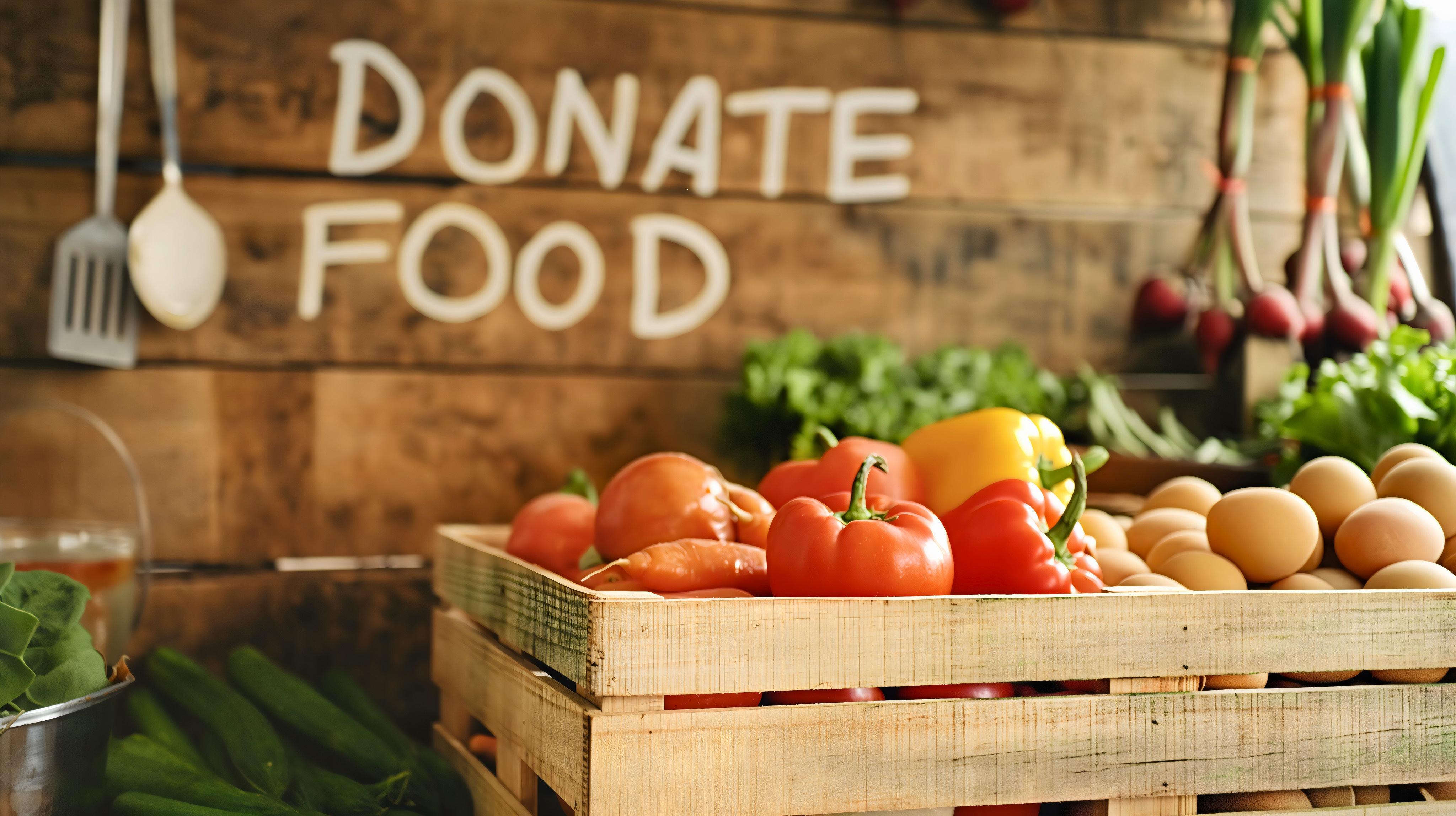
SALES HISTORY DATABASE
At Levy Restaurants, we firmly believe that knowledge is power. Sharing historical event information is crucial for our team's success, allowing us to refine and enhance each subsequent event. Our Sales History Database is designed to be a comprehensive repository that captures invaluable insights and data from past events, setting the stage for future triumphs.
Suggested Events to Upload
To maintain the richness of our database, we encourage you to upload information for the following types of events:
• National Event Clients: Including industry giants like Google, Amazon, and Salesforce.
• Association Events: Such as those organized by the National Association of Realtors.
• Industry Events: Including prominent gatherings hosted by MPI, PCMA, and IAVM.
• By contributing to the database, you're not only supporting your future self but also helping your colleagues across the organization.
How to Upload Your Event Data
Uploading your post-event information is streamlined and straightforward. Simply use the Sales History Database Form to drop in your event details. This user-friendly form ensures that all relevant data is captured efficiently.
Why It Matters
Accessing and utilizing historical data can significantly enhance the planning and execution of upcoming events. By reviewing what worked well and what could be improved, our teams can make data-driven decisions that lead to even greater success.
Get Started Today
To explore the wealth of information available and contribute to the Sales History Database, click here. Your participation is key to building a robust database that benefits everyone. Levy Restaurants is committed to fostering a culture of continuous improvement and shared knowledge. Let's work together to make every event better than the last!
Utilizing the Sales History Database Form > LINK - you can easily drop in information post event. To Utilize the Sales History Database, and review the historical data provided - click the link > HERE
CATERING MENU PRESENTATION
The design of a menu goes far beyond mere aesthetics; it significantly influences customer perception and experience. A well-crafted menu not only showcases the culinary offerings but also sets the tone and of the location.
Visual Appeal and Readability
A visually appealing menu with clear, legible fonts and an uncluttered layout enhances readability and entices customers. Colors should complement the restaurant's theme and evoke the desired emotional response. High-quality images of signature dishes can stimulate appetite and encourage orders.
Menu Structure and Flow
Strategically organizing menu sections can guide customers through the ordering process. Grouping items into logical categories, such as appetizers, mains, and desserts, helps diners navigate choices effortlessly. Highlighting specials or chef's recommendations can draw attention to high-margin or seasonal offerings.
Descriptive Language
The power of words should not be underestimated. Descriptive and evocative language can transform a simple dish into a culinary experience. Phrases like "succulent grilled salmon" or "decadent chocolate mousse" create vivid imagery and heighten anticipation.
Pricing Strategy
Menu design can subtly influence customer spending. Placing higher-priced items at the top or using clean, non-monetary fonts can reduce price sensitivity. Omission of currency symbols and minimizing the use of decimals can also make prices seem less intimidating.
Consistency with Brand Identity
A menu should reflect the location's brand identity and ethos. Whether it's a rustic, hand-crafted menu for a countryside bistro or a sleek, minimalist design for a modern urban eatery, consistency in style reinforces brand recognition and loyalty.
Sustainability and Material Choice
In today's environmentally conscious world, the choice of materials for printed menus can also make a statement. Recycled paper or sustainable printing practices can resonate with eco-friendly customers and enhance the restaurant's image as a responsible business.
Menu design is a multifaceted element of the location + Levy branding and customer experience. By investing thought and creativity into menu presentation, we can make a lasting impression, and ultimately drive success.
Common Mistake: Poor Photo Quality
The use of AI can be helpful when creating menus, but avoid AI generated photos, blurry photos and poorly photos in your menu.
Common Mistake: Poor Descriptions


Poor menu descriptions can cause your consumers and servers unnecessary frustration, not to mention potential missed sales opportunities. Longer, more detailed menu descriptions have
Common Mistake: Lack of Attention to Design
Believe it or not, the look and feel of your menu can influence guest experience. Use of space, font style, and size, are all important elements
Common Mistake: Ignoring Upselling Opportunities
Don’t forget to leverage the opportunity to upsell. Customization can be an easy way to upsell on your menu
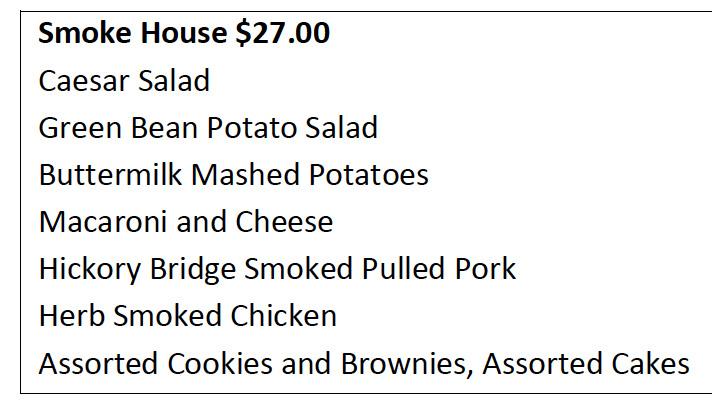
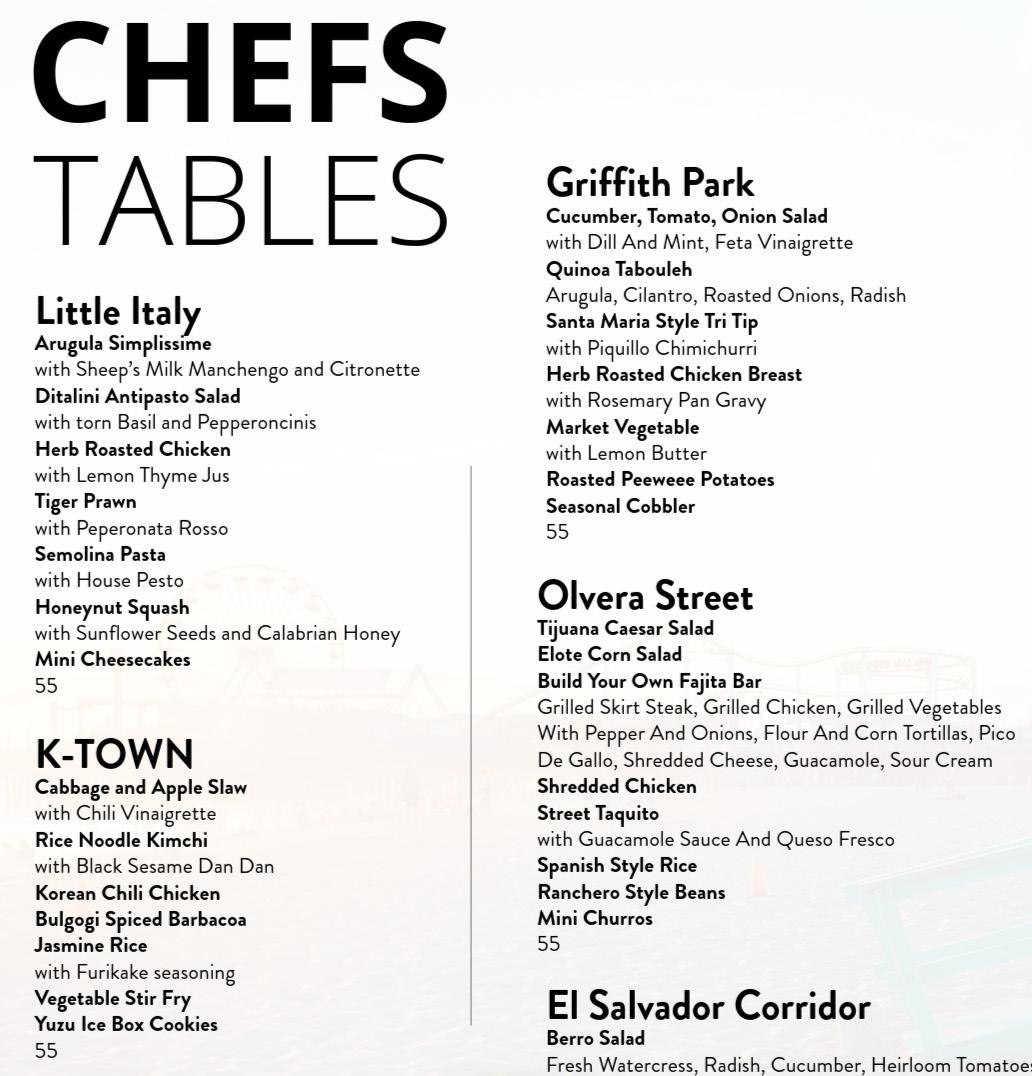

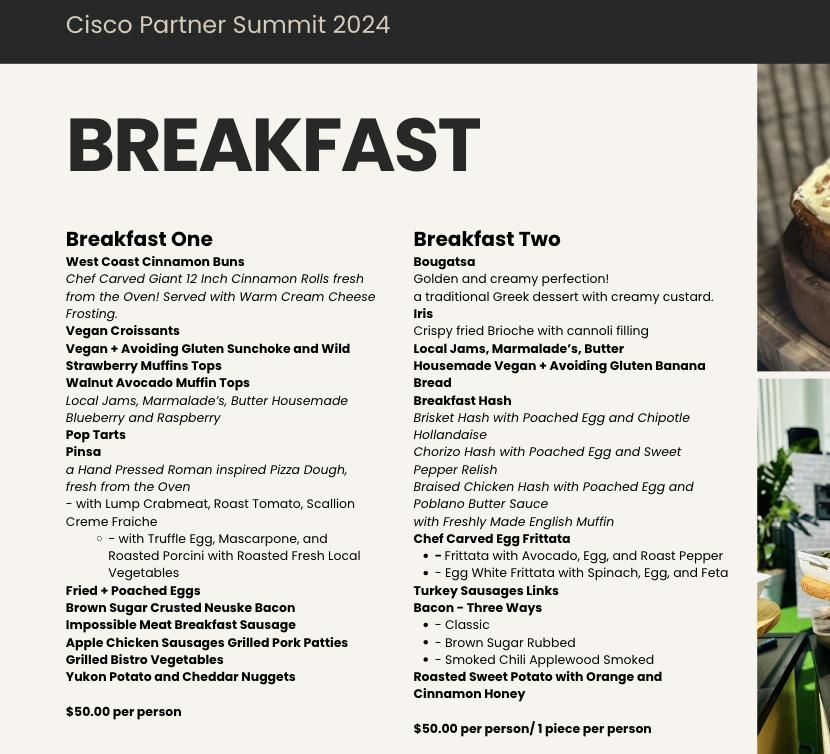
TASTING GUIDELINES
Creating an unforgettable event starts long before the guests arrive. It begins with a meticulous and often exhilarating tasting process. This is the moment where culinary artistry meets logistical precision, and where event planners and chefs come together to ensure every detail is perfect. Let’s dive into the tasting process, from the initial preparations to the final review.
Setting the Stage: Tasting Guidelines
• Event must meet a minimum guaranteed guest count of 1000 people or more
• Event must meet or exceed a food and beverage minimum of $40,000 or more per event being tasted
• Tasting guarantee will be for 4 people maximum (most influential decision makers)
• Event function must be a plated or reception style event (no chef ’s table will be permitted for a tasting - unless approved by Senior Management)
• One menu tasting will be offered complimentary, if more than one tasting is desired than additional tastings will be order at menu pricing
• Tasting menu must be finalized at a minimum of 30 days prior to tasting date.
If a tasting is requested that is outside of the above mentioned requirements the tasting would be extended at menu cost.
Prior to the Tasting
Menu Development:
Client to specify dishes they would like to taste to Sales Manager at least 30 days prior to the tasting. All Tasting Menus should be costed prior to tasting date.
Equipment:
Banquet team to do a pull 4 days prior with all actual items proposed, including the respective china, glassware, disposables and all other equipment that will be used during this event.
Sales Manager should be sent this list with current inventory of each item. If rental equipment will be required for the actual event, samples should be provided during the tasting. Menus:
Sales Manager will create menu sheet notes with each item being tasted. Dietary items, along with ingredients should bbe listed.
Banquets to place at each setting with pens for the guest to take notes regarding the presented meals.
During the Tasting
Banquet Service Needs:
• Have Coffee And Chilled Soda Available. Flat And Sparkling Should Be Placed On Tasting Table
• Present Proper Amount Of Silverware Needed For Tasting
• B&B Plates, Butter Knives And Tongs Present For Bread Services
Sales Manager:
• Discuss Upcharges Such As Floral, Linens, Décor Etc.
TASTING GUIDELINES
Chef’s Presentation Of Food:
• All Dishes Are Described By The Chef. Ounces They Are Served Or At The Chef Table, Including All Visible Ingredients And Portions.
• If A Chef Table’s Actual Portion Size And Presentations Are Used. For Plated Function A “Show” Plate Of Actual Portions Are Displayed For All Courses To Be Tasted And Tasting Size Portions Are What Should Be Served.
• Chef Remains In The Room For At Least 20 Minutes O Answer Any Questions Presented By The Client As The Meal Is Tasted.
After the Tasting:
Tasting Documentation:
• Sales Manager Collects The Notes From Attendees
• The Notes/Feedback Is Consolidated And Sent To The Main Client With Photos Of The Menu
• The Notes/Feedback Is Sent To The Culinary Team Banquet Event Order:
• Once Beo Is Created It Is Distributed To The Lacc F&B Team
• Photographs And Tasting Notes Should Be Attached
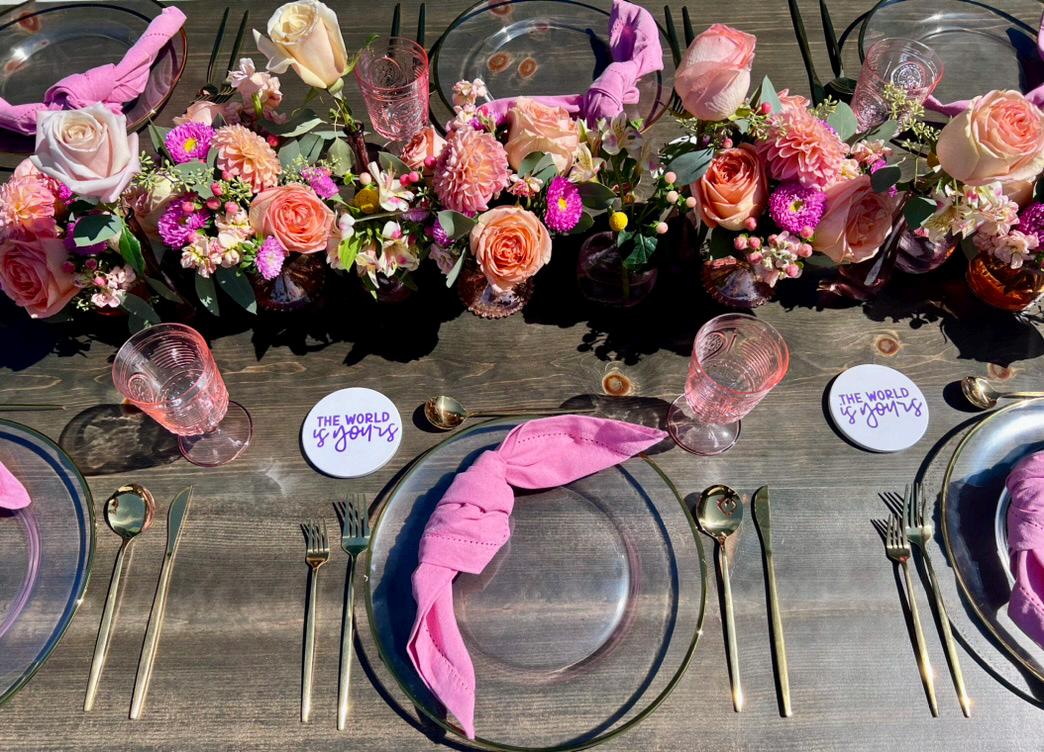
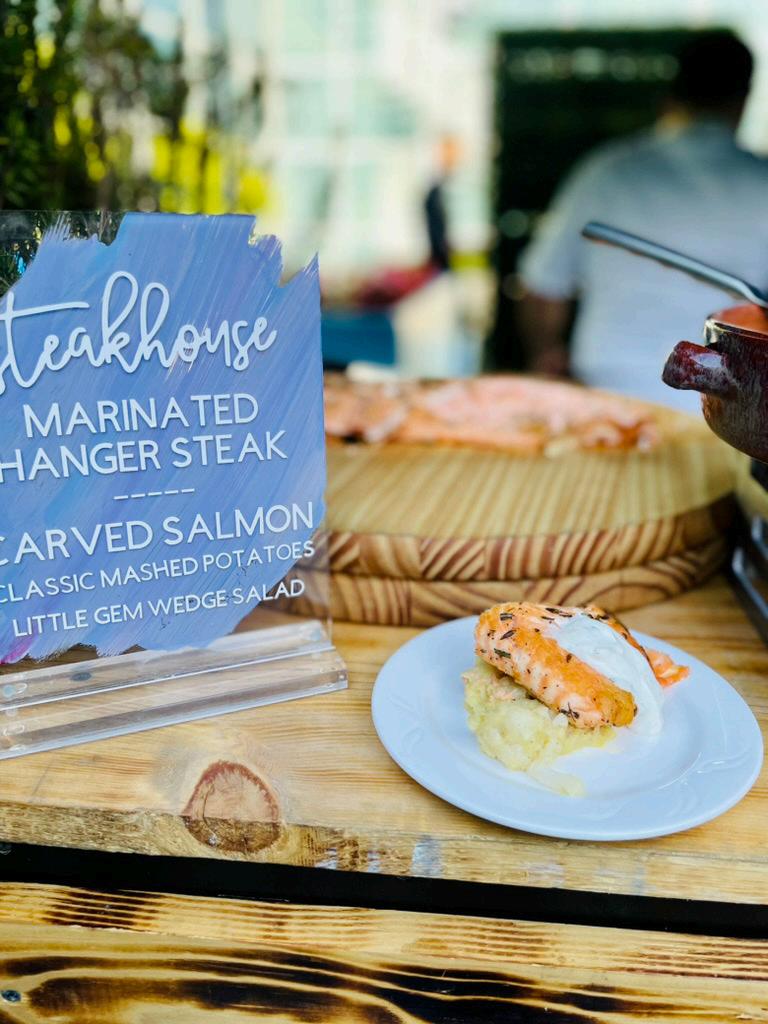
STAFF OFFICE GUIDELINES
In the bustling world of event management, the Staff Office serves as a sanctuary. It is a space where the show management team can recharge, refuel, and reconnect. A well-organized and welcoming Staff Office not only boosts productivity but also enhances the overall well-being of the team. Let's dive into the elements that make the Staff Office a pivotal part of any event.
Staff Office Menu
What is a Staff Office Menu?
We recognize the importance of what good food does for our good mood, which is why we take what we serve in the staff office our top priority.
Process
Taking our traditional catering menu, or customized attendee menus from the current event - creating a customized staff office menu with expanded offerings and/or special touches with incentivized pricing makes the show management team feel taken care of.
• Create menus that are inclusive of lifestyle and dietary preferences - to make it easier for culinary, and avoiding specialty meals.
• Check if there are any allergies we should be aware. Ensure all menu cards are labeled correctly and have key dietary icons listed.
• Ensure there are at least 6-7 unique menu offerings. Show Management can often time be in our centers for extended periods of times - and no one likes to eat the same thing every day.
• Adding items like a build-your-own cereal bar, or salad bar, are nice touches to ensure there really is “something for everyone”
Pro Tip: Ask show management if there are special likes/dislikes from their staff.
• If there is an aversion to raw onions, or garlic, we can avoid from all menus in this space.
Random Acts of Kindness
The Meeting Planner Amenity List guideline calls for Gift baskets and RAKs (Random Acts of Kindness) These should be personalized based on individual properties, guest preferences, and budget. Pro Tip: Dropping these RAKs during an afternoon meeting while there is a larger audience to enjoy is a nice touch.
Explore RAK examples for inspiration.
Movie Day:
We have our own popcorn maker, large candy boxes sell for $1.00 at Target. Pro Tip: Theme it around your local city! Example: Movies either filmed or based around Cleveland. Believeland, The Christmas Story, Major League, The Avengers, Fast and Furious, or theme for Client.
A small movie clapper with the client information listed as Director, etc.
Get TV and DVD player from in-house AV company
STAFF OFFICE GUIDELINES
Afternoon Tea:
Tea box, flavored hot, and iced teas.
Culinary does great teabag cookies, and finger sandwiches. Options include an Alison in Wonderland Theme and Spring Theme BACON DAY!:
Culinary does a variety of bacon flavors. Serve with local bacon donuts
Relax/Take Care of Yourself:
Local Juices (cold pressed), Infused water or smoothie bowls. Massages, masks, hand cream at Target ($2-$4 each), our honey-infused lip balm. Bath bombs. Exotic fruit, local veggie, and edamame hummus cups.
Upgrade: Chair masseur or pedicures
Microbrew and Soft Pretzel Day:
Local to your city - Craft Beers
Soft pretzel display with local mustards and other assorted accompaniments Get TV and DVD player from in-house AV company
All Day Pantry Package
Being away from all the comforts of home is hard when you are on the road for an event. Little touches from cutlery and glassware to fresh fruit and milk, you can create a vibrant and homey pantry space that feels like a home away from home for show management.
Below are some suggestions to make the pantry in the staff office special.
Single Cup Coffee
Maker (KCUP)
Don't underestimate the power of a morning cup of joe! Providing coffee and supplies can start the day right and develop relationships that lead to happier and healthier workers. After all, drinking coffee is a corporate ritual that brings staff together
Assorted Beverages
In addition to the basics like assorted sodas and water, check with the show manager to see if there are any staff favorites.
Fresh Fruit
Fresh fruit is an essential staple of any office kitchen and an excellent way to promote a healthier and happier work environment.
Assorted Milks
Milk is a staple as most people enjoys a cup of tea or coffee a few times a day. Providing milk also means that staff can enjoy a bowl of cereal. Remember to order some non-dairy or plant-based milks like oat, soy or almond.
Snacks
We know that healthy snacking options like fresh fruit are essential, but we don't want to forget about those of us with a sweet tooth who need a midday sugar fix. So, don't forget to stock your pantry with a variety of sweets and treats, like cookies and sweets, to help everyone power through their afternoon slumps.
STAFF OFFICE GUIDELINES
Condiments
Having a well-stocked pantry with condiments is a must. You'll need basics like ketchup, honey, salt and pepper on hand, but feel free to get creative. Cinnamon, chilli, lemon juice, mustard, hot sauce– there's a world of possibilities!
Pro Tip: Keep it local! Bring in local condiments to give the staff a taste of the city. Assorted Cutlery + Glassware
If making lunch in the office has ever made you feel frustrated, you understand the importance of cutlery and dish ware. Most employees will expect readily available kitchen utensils, e.g. cutlery, plates, bowls, and glasses (at least). With these supplies, staff can enjoy their food together whenever, wherever.
Pro Tip: Have Disposable + China - everyone has a different preference! Fresh Flowers + Plants.
Add a touch of flair to the office and other areas by incorporating fresh flowers. Flowers look and smell delightful, giving your office a welcoming atmosphere that anyone can appreciate Pro Tip: If you want to get creative with your floral arrangement, consider placing flowers in different areas of the office based on their meanings to promote particular feelings or emotions.
Comfortable + Inviting Office Space
With so much time spent in the office, usually after a long day on the show floor, it’s a nice touch to create an environment that empowers people with the right space to work, or relax and recover These should be personalized based on individual properties, guest preferences, and budget.
Pro Tip: Always check with Show Management and Building Services prior to making an changes to the clients floor plan.
Below are some suggestions to make the space in the staff office special.
Focus on comfort
The key to making the office feel more like home is to create a comfortable, welcoming, and human-centred space. Bring the outside, in.
Indoor plants and natural lighting are a great way to increase the comfort of the office space. It has been found that the presence of plants in offices can lower stress and anxiety levels by up to 37%, as well as decrease tiredness by up to 38%.
Soft furnishings
Bringing in Soft furnishings is a perfect way to add comfort to the office space. Either renting, or bringing furniture in from other spaces - is a great way to add comfort into the space.
Simple Amenities and Toiletries
Having some additional comforts from home is an added unexpected touch that will go along way. We all know what its like to be away from home and need something - and it’s nice to have things at your finger tips.
• Nail files
• Dry Shampoo
• Hand Sanitizer
• Mouthwash
LABELS & MENU TAGS
This document provides comprehensive guidelines on label and tag printing, highlighting different types of printers, labels, pricing, and shipping options.
Label Printers

Professional Printers
Volume Printing by Professional Printer
Canva
Pricing starting at .10 per label
Expedited Shipping Available - as fast as 2 days.
Sticker Mule
Pricing starting at .04 per label
Expedited Shipping Available - as fast as 6 days.
Avery.com
Pricing starting at .04 per label
Expedited Shipping Available - as fast as 4-6 days.
Menu Tags Creation
Mail Merge Technology
Utilize INFOR Reports and Mail Merge to create customized menu tags using Avery tags.
Avery Tag Options
• Square Cards with Sure Feed Technology, 3" x 3"
• Clean Edge Square Cards with Sure Feed Technology, Rounded Corners, 2-1/2" x 2-1/2"
• Name Badge Insert Refills, 3" x 4", White, 300 Printable Name Tag Inserts (5392)
